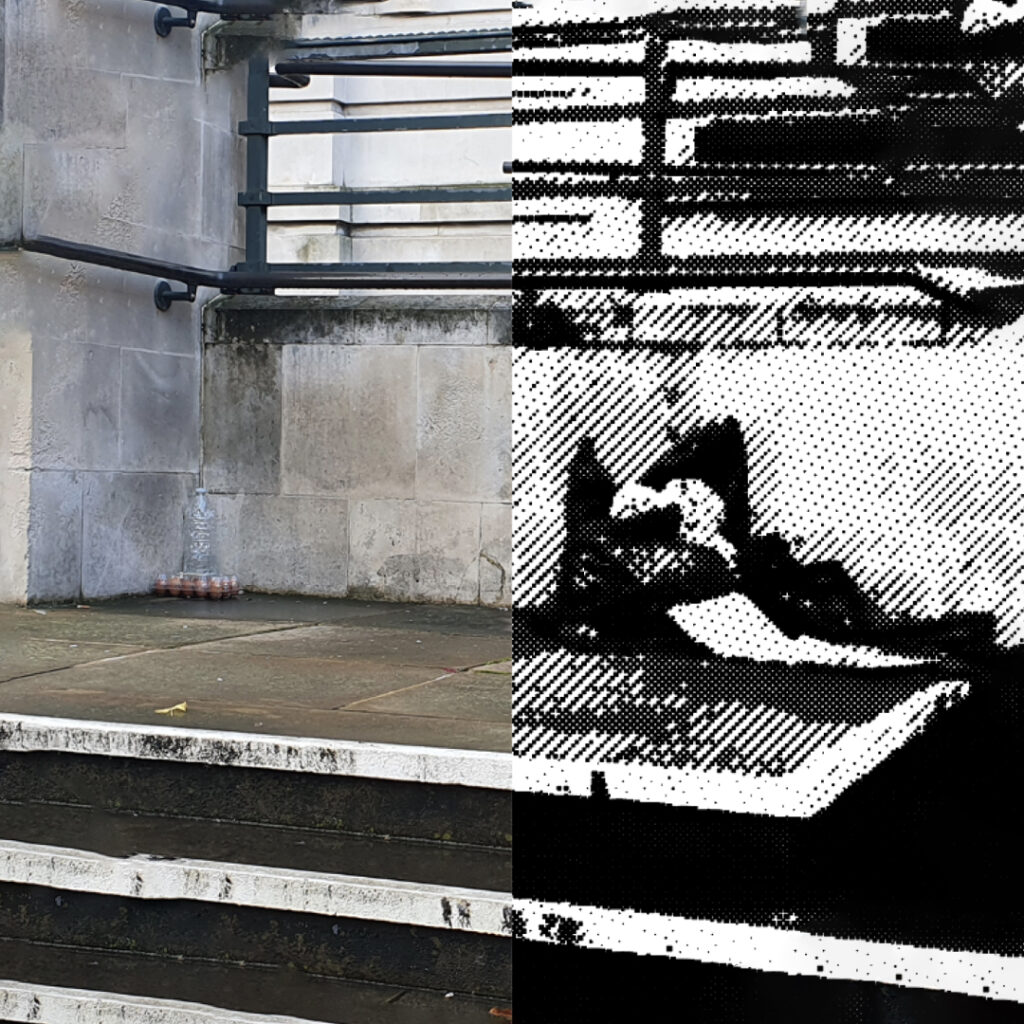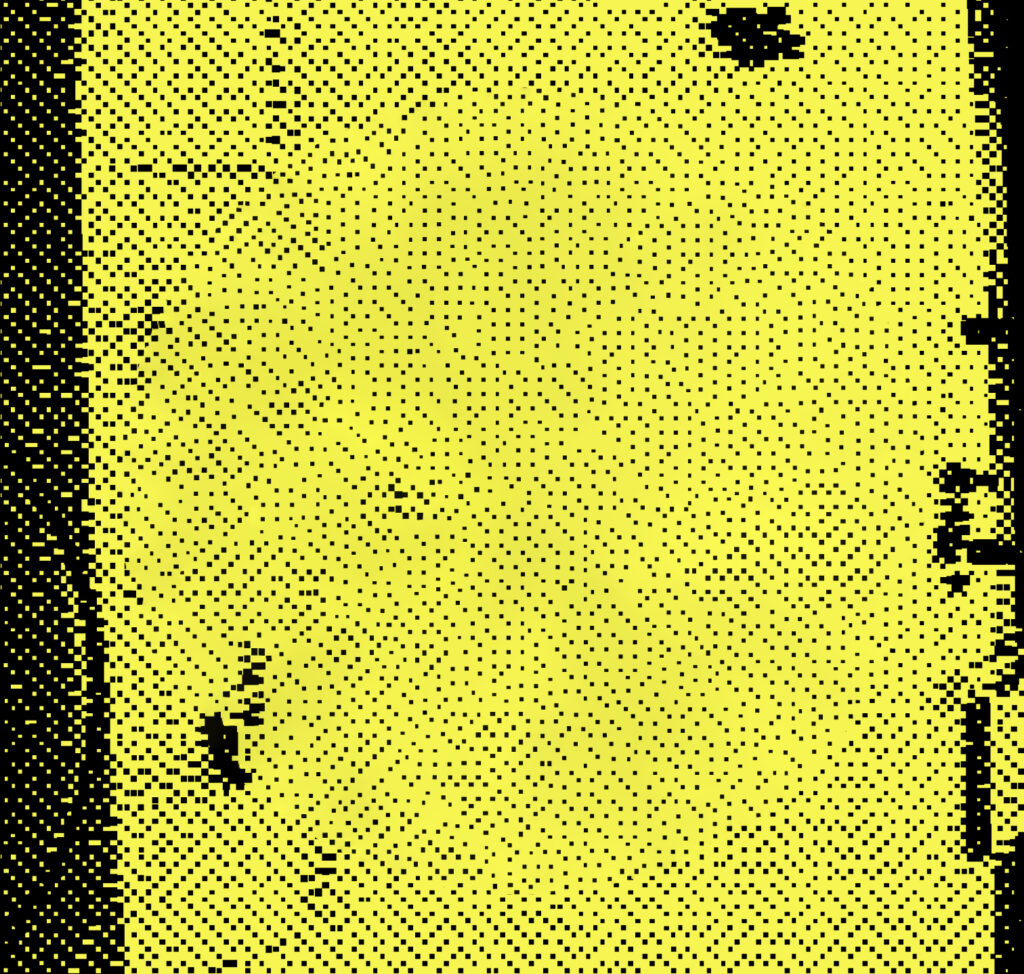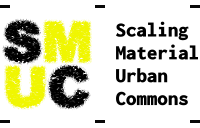fragments — street scale
Fragments — urban scale


People often find the proposal of teaching an algorithm to accurately anticipate the optimal ingredients for their dinner condescending. ‘I am offended by the assumption that I don’t have the cooking skills to cook with any rescued ingredient that fits my repertoire!’*
Taking pride in flexibly adjusting recipes or enjoying the challenge of cooking with ad-hoc ingredients is countering the maxim of optimisation in the kitchen. The consequences of finding value in the serendipity introduced by ad-hoc deliveries reach beyond just giving slack to the engineers of the algorithm. They are enablers for Machine Teaching Commons.
When it comes to distributing food, the possibility of Machine Teaching Commons is linked to the possibility of inhabiting the space between big-data-driven, specialized, highly optimised predictive models and manually executing ‘if this than that’ protocols.
We need to populate this space of the Machine Teaching Commons with data-generating practices legitimised by commoners and machine teaching setups that commoners can autonomously operate. A space in which the complexity of the input conditions that drive decision-making and the correlation between input conditions and decision outcomes does not evade the grasp of the commoners. A space where commoners stay in the cybernetic loop of algorithmic decision-making.
(image: screenshot of smuc.kitchen algorithmic food distribution model prototype)
A model running on a smaller, curated set of (unwieldy) data, that lacks the precision of large data-driven models. But can it still ‘good enough’ to serve commoning of food? Using food categories, such as ‘stir fry veg’ or ‘green veg’ instead of food items, such as ‘broccoli’, reduces the complexity of the model. Training the model for ‘green veg’ instead of training the model for broccoli, kale, pak choi, beans, etc. takes less effort and less data and is simpler to negotiate.
Whatever food item hides behind ‘green veg’, many people would happily serve it up as a side or use it as an ingredient of their soup.
*Paraphrase of recurring remarks in workshops simulating collective machine teaching.
ThingsCon 2023 provided a brilliant opportunity to test the settings for collectively teaching a machine to distribute rescued food in participants’ kitchens. No, tech skills are not necessary. The workshop was dominated by sharing stories about the sizes of fridges and freezers, being flexible with recipes, and taming the chaos in family kitchens. Storying and the ability to reteach the machine emerged as key for countering the optimising tendencies of the algorithm.
See ThingsCon short video for a glimpse of the event and the workshop.
In machine teaching, labelling is the act of applying a set of labels on training data, which is then used to teach the model that in turn will categorise future data according to those labels. Collective labelling is a key activity in teaching an algorithm to decide where an ingredient should be delivered at a given moment in time. The workshop Labelling Friction rehearsed and reflected strategies of negotiating labels and applying them to a dataset to teach a model
The workshop worked with 500 pantry images as training data and the labels were recipes for food to which the ingredients in the pantry could contribute. For the labels we tapped into and negotiated participants’ personal languages of meals and cooking habits. After agreeing on a limited number of meals, the participants used these meals as labels and attached them to further images of pantries (training data) on the platform Roboflow.
The training data pantry images were generated by a tool combining our very own Data Generator software and Stable Diffusion AI image generator tool.
The workshop setup was inspired by the subversive labelling practice in van der Burg’s and de Boer’s project ‘Objective Portrait’.
Workshop co-organiser: Iohanna Nicenboim
Workshop consultant: Vera van der Burg
Design f®iction exercise at the Design Friction For Predictive Food Commoning workshop March 2022 Amsterdam.
“AI-Drop, the cooperative for predictive distribution of rescued food is about to reach its first year of operation. You are following their operation closely. You are scrolling through your personal bubble’s chatter on your Twitter feed. #smuc.kitchen appears in your feed again. There is outrage from communities, designers and academics likewise. What are the people you follow saying?”
Prototyping cards and facilitation cards are widespread utensils of co-design and facilitation methodologies. The cards are abstracted and mobile manifestations of accumulated practice or, coming from the other side, diagrammatic and actionable simplifications of theory. Either way, card sets introduce the usual suspects that emerge or ought to be addressed in the process. They commit to ontologies, the appropriate level of detail, and relevant categorization. This way, card sets create the dispositions and possible paths of the systems, processes, organisations or infrastructures they are used to imagine, negotiate or prototype.
Smuc.kitchen Card Deck is a subversive prototyping card deck for negotiating data streams, logistical solutions, and interfaces of an automated distribution platform for rescued food with factors such as dietary requirements, cooking culture, available processing, storage capacities, hunger, mood, motivation etc. It is subversive as it comes packaged as an extension card set for the IoT Service Kit prototyping card set; but instead of facilitating the implementation of a design, it aims at extending or rearranging the ontologies of ingredients, meals, bodies and waste in from the perspective of negotiation human and more-than-human use value.
The Smuc.kitchen Card Deck aims at:
- Negotiating the ontologies of meals, ingredients, and waste transformed by logistics and processing (kitchens, bodies, bacteria).
- Formulating stories of commoning-based infrastructures and automation that emerge from speculation about sensing; thinking about the kinds of data and sensing needed to tell the stories worth telling.
- Revealing the extent of the overlap between the elements of commoning-based and more-than-human automated infrastructures and mainstream IoT service architectures.
- Scrutinise the direct connection between collected data and the functionalities it is fueling to strive towards minimal feasible datafication (see Undoing Optimization by Alison Powell).
- Negotiate the friction between heterogeneous cooking habits and standardisation of the system.
Basel Shape Walk with bachelor students of the “Grasping The Future City” class at FHWN Academy of Arts and Design, Basel, September 2021.
In On Nonscalability, Anna Tsing compares colonial sugarcane production with defiant matsutake mushroom foraging in today’s North America to outline the limits of scalability. She creates awareness of how scaling-up operations change the very nature of the scaled project. Scaling Material Urban Commons (SMUC) is invested in understanding scale domains and the moment when the nature of commoning changes during city-wide scaling up.
The Basel Shape Walk investigates cognitive scale domain boundaries by exploring our capacity for recalling the length and shape of urban walks. It locates boundaries of recallability by walking different paths and exploring when our implicit capability of recalling the walk starts to fail us. In the walk, a blindfolded person and a navigator both walk a preset path of around 20 minutes in the streets. After the walk, the blindfolded person attempts to recall and draw the route. The choice of the path’s duration and shape make recalling difficult but not impossible, even if it takes several attempts and corrections. In the Basel Shape Walk session, most participants could recall and produce the path on paper (image 1–8). However, the exercise proved to be more challenging in the original 2009 Zagreb version of the experiment, where only one person from five could reproduce the Zagreb paths on paper (images 9–10). Alva Noë’s concept of transmodality between touch and vision in Action in Perception provides the experiment’s philosophical background for recalling the perception of the walked path (touch) through drawing (vision). Transmodality suggests that spatial concepts that we acquire through touch and vision are fundamentally similar (they produce similar sensorimotor patterns). In effect, we can recall shapes that we have perceived through touch by drawing them; this is less a translation between visual and tactile concepts as it is the recall of the same concept but in a different modality. The walking experiment introduces the issue of scale to transmodality by playing with the question of what size of the path (meter or kilometre scale) is too large to be recalled in drawing (centimetre scale). With routes that are just large and complex enough that their recall prompts a challenge, the experiment demarcates the boundaries of a scale domain in which grasping and recalling an implicit, embodied spatial concept is still possible. The struggle of explicitly reproducing an implicit spatial concept through drawing is the manifestation of that boundary.
Noë’s concept of transmodality between touch and vision is thus extended in the walk through the playful introduction of scale. Transmodality suggests that we acquire the same spatial concepts through touch and vision: on an abstract level there is an implicit similarity between the sensorimotor patterns of shapes produced by touch and vision, and recall is an indicator of knowledge, or in other words a grasp, in the sense of a sensorimotor concept.
The Basel Shape Walk experiments with transmodality across scales (ca. 0.4 km of the walk and cm of the drawing) and explores the size (and complexity of the shape) that is on the brink of recallability.
Contact
Academy of Art and Design
Institute Experimental Design and Media Cultures (IXDM)
Freilager-Platz 1
CH-4002 Basel
mail@smuc.kitchen
About SMUC
Scaling Material Urban Commons (SMUC) crafts imaginaries of urban futures that reconcile automation and predictive technologies with commoning- and care-based use of resources. SMUC uses speculative city-making to scale up the commoning of rescued food. It does so by prototyping a predictive algorithm-based system, dubbed Smuc.kitchen, that orchestrates the collection and drop-off of rescued food in Basel and London.


Draft anatomy of an infrastructure for food rescue, sensing body and kitchen conditions, collective machine teaching and algorithmic distribution of food items.
More detail to follow…
Workshop about the clash between automated food delivery and heterogeneous, idiosyncratic eating cultures, Amsterdam and Online, March 2022.
Automation is closely intertwined with paradigms of efficiency and thrives in repetitive settings. Automation is conducive to repetition through its unifying and standardising techniques. Automation is arguably adverse to negotiating diverse interests, relations or heterogeneous and idiosyncratic practices. SMUC investigates the friction between platform-scale technologies of automation and heterogeneous, situated and messy local eating cultures.
Design Fiction is a methodology for creating imaginaries of the future that challenge the status quo and enable the scrutiny of possible futures. SMUC proposes the Design F®iction method to expose the friction between the automation of rescued food distribution and commoning-minded social, political and economic perspectives. The interdisciplinary workshop aims to activate the imaginary of the Smuc.kitchen automated commoning infrastructure through storytelling and playful simulation, and map out where scrutiny is required. Instead of dismissing automation in commoning practices, the workshop’s ambition is to critically but constructively probe the design space for automation in urban food commoning. The Smuc.kitchen automated infrastructure is equal parts proposal and provocation.
Methods used in the workshop include: mapping problematic aspects of the Smuc.kitchen infrastructure, playful simulation of the Smuc.kitchen infrastructure by enacting urban data streams, and enacting and teaching a machine-learning algorithm writing fictive future Tweets about the backlash against Smuc.kitchen infrastructure.
Workshop participants were (either in one or both workshop sessions): Jamie Allen, Cristina Ampatzidou, Roy Bendor, Jaz Choi, Joshua Entsminger, Gabriele Ferri, Györgyi Gálik, Dan Lockton, Iohanna Nicenboim, Iskander Smit, Martijn de Waal, Gabriela Aquije Zegarra.
Concept prototype for the SMUC.kitchen infrastructure. Amsterdam, Basel, December 2021.
One of the critical aspects of automating the delivery of rescued food is exploring where rescued food can realistically produce a balanced meal. SMUC partnered with the Master of Digital Design (MDD) at the Amsterdam University of Applied Sciences to explore an experimental recipe generator module for the SMUC.kitchen infrastructure for distributing rescued food. MDD students Anouk van Asbeck, Caterina Maluenda Guerrero, Utkarsh Srivastava and Michaela Kořistová have conducted design research and developed a concept prototype dubbed “Wasty”.
Wasty is a recipe-box-style service that generates personalised recipes in real time based on the availability of rescued ingredients, individual cooking habits, dietary needs, cooking culture, available cooking equipment and ingredients already available in the kitchen. As a design research artefact, the recipe generator considers these factors and delivers pointers for teaching an algorithm about where to deliver reduced food.
Methodological exploration with bachelor students of the “Grasping The Future City” class at FHWN Academy of Arts and Design, Basel, September 2021.
Service design practice is profoundly integrating user research and user feedback in design decisions. However, if the struggle for ecological futures requires the inclusion of other-than-human beings in the addressees of design, prevalent design research methods for identifying user needs and understanding user experience will fail the designer. This methodological challenge motivated the creation of a workshop formatted to extend the IoT Service Kit (Internet of Things Service Kit).
The IoT Service Kit is an open access card set developed by the innovation agency Futurice to facilitate the conversation between technologists and diverse stakeholders about IoT-enabled services in homes, industrial sites, and the city. The kit is a card set containing sensor types, interaction types, devices, users, and data sets, all of which are building blocks of IoT services.
The workshop incorporated parts of the Moth City probe kit and exercises enacting non-humans to enable participants to shift from an exclusively human perspective, thus creating an ‘other-than-human extension card set’ for the IoT service kit. Viktor hosted the first instance of the workshop for design students in his experimental design practice course ‘Grasping the Future City’ at the Critical Media Lab, Basel.
These exercises and further workshops will result in the publication of an extension card set for the IoT Service Kit.
Workshop participation and publication, Summer 2021, London.
SMUC has a twofold interest in more-than-human design principles:
1) It is interested in infrastructures that turn food into commons by giving it a new purpose once it has been taken off supermarket shelves. The concern with the time window between supermarket shelves and food waste further extends to the circulation of food after it is consumable for humans.
2) SMUC’s concern with care-based and ecological approaches to automated and predictive technologies in commoning motivates an investigation into ways of including non-human agents (such as algorithmic agents) within commoning practice.
Viktor participated in the ‘Moth City’ workshops held by the project More-than-Human: data interactions in the smart city. The workshop explored roleplay and enacting urban critters as a method to decenter an exclusively human perspective and probe non-human perspectives on urban life. The workshop aimed to generate embodied design knowledge that enables speculation about data services with other-than-human users in mind.
Viktor’s reflections on the workshops and the struggle of shifting to other-than-human perspectives appear in the Moth Cities documentation booklet.
Contact
Academy of Art and Design
Institute Experimental Design and Media Cultures (IXDM)
Freilager-Platz 1
CH-4002 Basel
mail@smuc.kitchen
About SMUC
Scaling Material Urban Commons (SMUC) crafts imaginaries of urban futures that reconcile automation and predictive technologies with commoning- and care-based use of resources. SMUC uses speculative city-making to scale up the commoning of rescued food. It does so by prototyping a predictive algorithm-based system, dubbed Smuc.kitchen, that orchestrates the collection and drop-off of rescued food in Basel and London.
